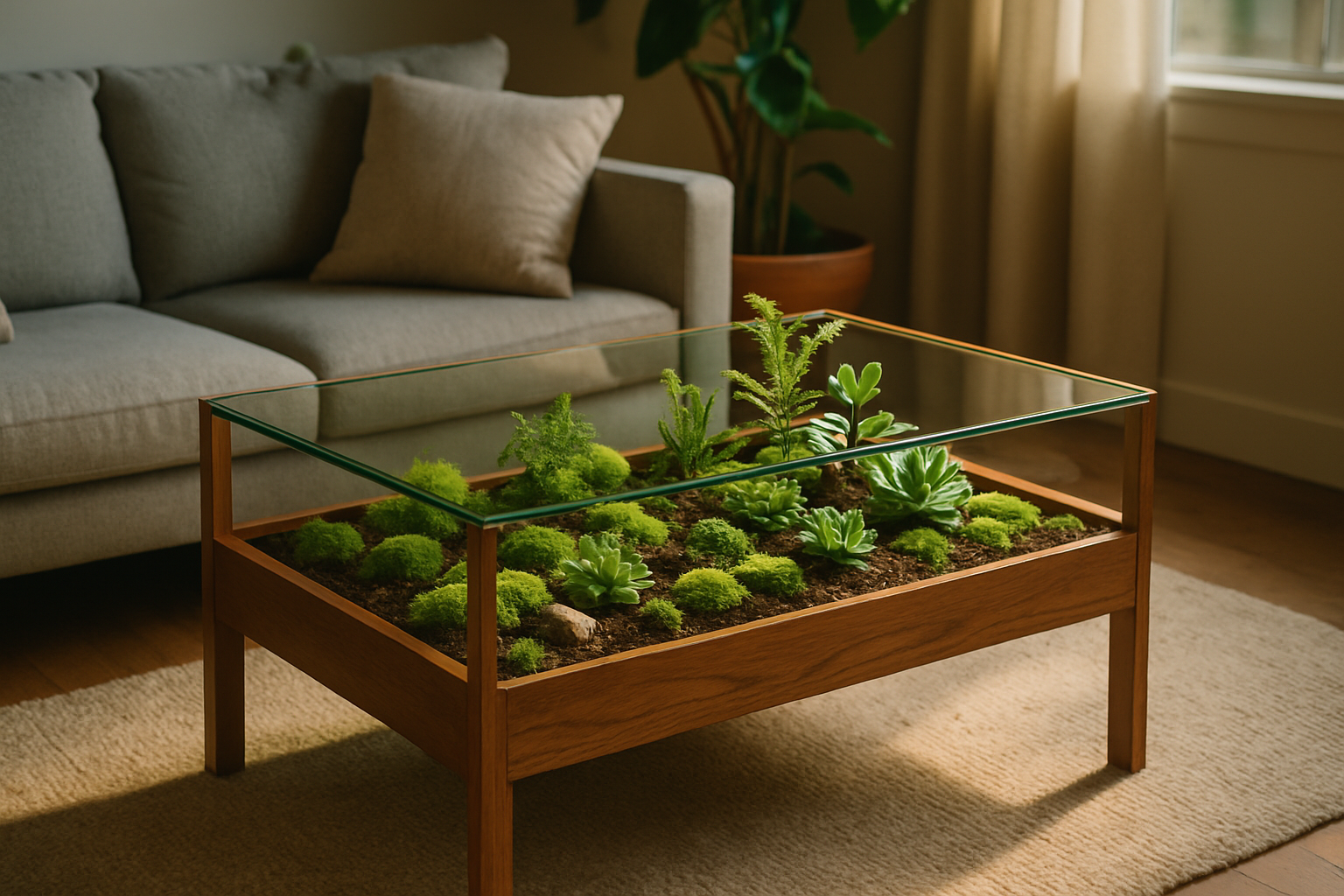Terrarium Tables: Blending Nature with Functional Design
A living room transformed by a coffee table that's more than meets the eye. Imagine a sleek, modern piece of furniture that not only serves as a functional surface but also houses a thriving miniature ecosystem beneath its glass top. This is the essence of terrarium tables, a fresh trend that's captivating home decor enthusiasts and plant lovers alike.

The Genesis of Terrarium Tables
The concept of terrarium tables can be traced back to the Victorian era’s fascination with miniature gardens. Dr. Nathaniel Bagshaw Ward accidentally discovered the terrarium in 1842 when he noticed fern spores growing in a sealed glass bottle. This discovery led to the creation of Wardian cases, which were used to transport exotic plants across long sea voyages.
Fast forward to the 21st century, and we see a resurgence of interest in terrariums, driven by urban dwellers seeking to reconnect with nature. The marriage of terrariums and furniture is a natural progression, catering to modern lifestyles that value both aesthetics and functionality.
Designing with Living Furniture
Terrarium tables come in various styles, from rustic wooden frames to sleek, minimalist designs. The key feature is a glass-topped surface that allows visibility into the miniature landscape below. Some designs incorporate LED lighting to showcase the terrarium even in low-light conditions.
When selecting plants for a terrarium table, consider slow-growing, low-maintenance species that thrive in humid environments. Ferns, mosses, and air plants are popular choices. The arrangement should be visually balanced, creating a harmonious scene that complements your overall decor.
The Science Behind the Beauty
Terrarium tables are more than just eye-catching; they’re self-sustaining ecosystems. The enclosed environment creates a water cycle, where moisture evaporates, condenses on the glass, and falls back as precipitation. This cycle mimics natural processes, requiring minimal intervention.
The presence of living plants in your living space can have numerous benefits. Studies have shown that indoor plants can improve air quality by filtering pollutants and increasing oxygen levels. Additionally, the visual connection with nature has been linked to reduced stress and increased productivity.
Maintenance and Care
One of the most appealing aspects of terrarium tables is their low maintenance requirements. Once established, these miniature ecosystems need minimal care. Occasional misting, pruning, and cleaning of the glass surface are usually sufficient to keep the terrarium healthy.
However, it’s important to monitor the moisture levels and avoid overwatering, which can lead to mold growth. Proper ventilation is crucial, and some designs incorporate small openings or removable sections to allow for air circulation and easy access for maintenance.
Integrating Terrarium Tables into Your Decor
Terrarium tables can serve as stunning centerpieces in various interior styles. In minimalist spaces, they add a touch of organic texture and color without cluttering the room. For bohemian or eclectic interiors, they can be paired with other plant-centric decor to create a lush, tropical feel.
Consider the lighting conditions in your space when placing a terrarium table. While most terrarium plants prefer indirect light, some may require specific light levels to thrive. The table’s location should balance the plants’ needs with your desired aesthetic and functional use of the furniture.
The Future of Biophilic Furniture
As our lives become increasingly digital, the desire to reconnect with nature grows stronger. Terrarium tables represent a broader trend towards biophilic design in our homes and workplaces. This approach seeks to incorporate natural elements and processes into the built environment, fostering a sense of well-being and connection to the natural world.
Looking ahead, we can expect to see more innovative furniture designs that integrate living elements. From walls that incorporate hydroponic systems to dining tables with built-in herb gardens, the possibilities are endless. These designs not only enhance our living spaces but also encourage a more sustainable and nature-centric lifestyle.
In conclusion, terrarium tables offer a unique blend of form and function, bringing the beauty of nature into our daily lives in an unexpected way. As we continue to seek balance in our fast-paced world, these living pieces of furniture remind us of the simple joys of nurturing and observing the natural world, right in the heart of our homes.





